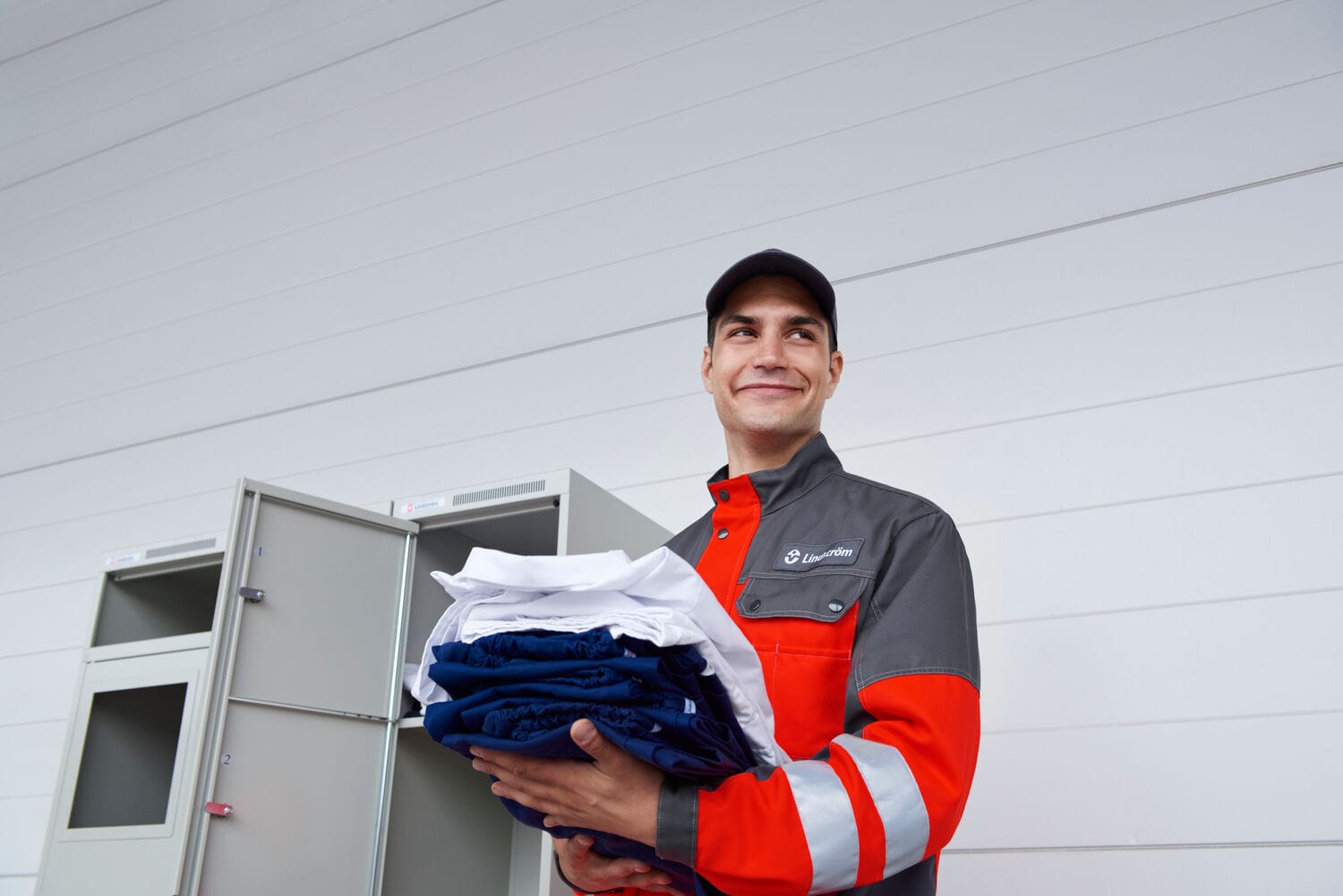
How circularity in textiles drives business
While the circular economy is still a relatively new concept, it’s quickly becoming essential for businesses to embrace circular principles.
According to VTT’s latest trend report, the circular economy is now a megatrend, with companies collaborating across industries to advance circularity. The EU strategy for sustainable and circular textiles also pushes companies to enhance circularity and recyclability in textile products.
At Lindström, our business is built upon circular economy principles. We recognise that textile waste is a global problem, with around 100 billion textiles produced and 92 million tonnes of textile waste generated annually. Our circular approach focuses on extending the life of textiles as much as possible and producing new textiles only when needed. We find innovative ways to recycle and close the loop, reducing the overproduction of textiles and conserving natural resources.
We’ve been operating for over a century with our textiles-as-a-service model, placing circularity front and centre. In this article, Kati Pallasaho, Senior Vice President of Strategy and Sustainability at Lindström, shares how we practise these principles while collaborating with internal and external stakeholders, and what lessons we’ve learned along the way.
How circular economy principles shape our strategy
It all starts with product and service design. We don’t just offer textiles to customers—we provide the full service model. We design our products for longevity, reusability, repairability, and recyclability.
There’s a big opportunity there to make wiser choices for the planet when it comes to the product design and material choices.
Kati Pallasaho, Senior Vice President of Strategy and Sustainability

Our end-to-end services, including textile delivery, washing, maintenance, and repairs, makes it convenient for our customers to adopt circular economy principles as part of their business. We also offer solutions for textile end-of-life scenarios, including recycling, upcycling, and downcycling.
Sustainability, circularity, repairability, and reusability are key decision making criteria for our customers. They are aware of the environmental burden certain textile fibres might have. Kati notes: “Many of our long-term customers chose us because we’re able to prolong textile lifecycles, reduce overconsumption, and save natural resources.”
Our commitment to circular economy principles shapes the evolution of our services, influencing how we operate our laundries, manage delivery services, and develop new offerings.
Kati emphasises our holistic approach: “We must consider everything from a climate perspective to reduce our footprint and help our customers become more sustainable.”
Measuring the impact of circularity
We’ve set two strategic circular KPIs to track our progress in this area:

1. End-of-life textile recycling
We aim is to recycle 100% of our end-of-life textiles by 2025. Last year, we reached a recycling rate of 74%, a big leap from 0% in 2019.

2. Using recycled or bio-based fibres
Our target is that 30% of new textiles purchased include recycled or bio-based fibres by 2025. In 2023, 18% of the textiles we purchased contained recycled materials. One clear example of our progress is our mats, which are now made from 75% recycled fibres.
Water circularity will also be a focal point going forward. We’ve already made strides in India to conserve this scarce resource, piloting water recycling at our industry-scale laundry facility with our partner Nalco Water. As part of this project, we successfully recovered 74% of water from the reverse osmosis process within 13 months. We used 56% of recycled water, and we limited freshwater consumption by 44% in the washing process.
Additionally, we’re building a comprehensive emission reduction roadmap to meet our climate targets. This involves examining our entire service model—from product design to laundry operations—to minimise our footprint.
Multi-party collaborations drive circularity forward
To reach our circular economy goals, collaboration is essential—both within Lindström and with external partners across our entire value chain, and beyond.
Internally, our product and service development teams work closely with our supply chain management and procurement teams to ensure all our materials meet quality and environmental standards.
For recycled workwear materials, we engage in multi-party collaborations with recycling companies, fabric manufacturers, and finished product manufacturers. We’ve also established a partner network across nearly all our 23 operating countries to recycle different end-of-life products.
Kati summarises: “We maintain long standing relationships with suppliers and engage in open collaboration to develop innovative materials.”
Systemic change is needed for circularity to become the norm
Compared to the linear economy, circularity is a completely new way of doing business that requires a mindset shift. To drive further progress in circular economy principles, systemic change is essential. It goes beyond the efforts of any single company.
Are we making changes fast enough in the business models of companies? I don’t think so. Because if you look at the circularity gap reports, more than 90% of the materials we use are not recycled. We’re throwing a lot of stuff away.
Kati Pallasaho, Senior Vice President of Strategy and Sustainability
Kati urges company decision makers to consider renting products when possible instead of owning, to keep challenging existing business models, and to be vocal about the need for change. At Lindström, for example, we openly discuss our circular economy business model and offer practical insights to inspire other companies to take action.






